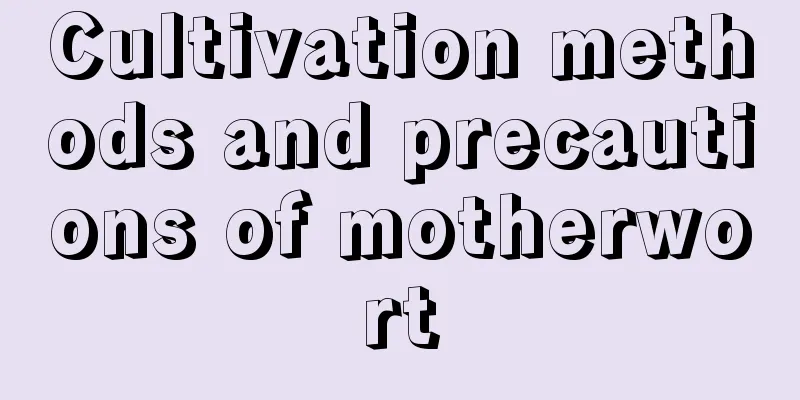Cultivation methods and precautions of motherwort

1. Maintenance methods1. Water management: Motherwort likes a warm and humid climate and requires sufficient water conditions. It should be watered in time, which is conducive to its growth, but it should not be stagnant and is afraid of waterlogging. 2. Substrate selection: Choose soil mixed with fire ash or fine soil and fertilizer. At the same time, ensure that the soil is loose and has good air permeability. 3. Nutrient management: Top dressing should be done in time during the breeding process, because motherwort is a plant that prefers fertile soil, so sufficient nutrients will help to enhance respiration intensity and improve seed germination rate. 4. Temperature management: It prefers a warm and humid environment, and the average temperature is best maintained at 26 degrees Celsius. However, it is also a hardy plant, so it will be easy to overwinter. 2. Breeding techniques1. Sowing: Motherwort is cultivated and propagated by seeds, so preparations need to be made before sowing. Prepare ash and rare earth in advance, and then mix the seeds with human and animal feces and urine and new lipid film. Then pour enough water on the surface, which is conducive to the growth and development of the seedlings. 2. Management: When planting, you must timely thin out the seeds, supplement the seedlings, fertilize and water them. When there is a lot of rain in summer, you must prevent drought and flooding, and pay attention to timely drainage. At the same time, provide sufficient light time and loosen the soil regularly to improve soil permeability. 3. Problem diagnosis and treatment1. Yellowing leaves: If yellowing leaves occur, it is most likely caused by water accumulation. Excessive water accumulation and insufficient oxygen will cause the leaves to turn yellow. At this time, we need to replace the soil with good ventilation and moderate moisture. 2. Pests and diseases: The main disease is powdery mildew, which can be sprayed with 1000 times diluted 25% triadimefon. Aphids are also the main pests that harm it, and can be killed by spraying 2000 times of 40% dimethoate solution. IV. Other issues1. Is it poisonous? It is a plant of the Lamiaceae family and is non-toxic. Moreover, its flowers are very beautiful and have a strong fragrance during the flowering period. They are very suitable for placing at home or giving to friends for viewing. 2. Harvesting: During the harvesting process, because the plants are tall, wear protective measures such as thicker clothes and gloves. |
<<: Cultivation methods and precautions of annual holly
>>: Cultivation methods and precautions of pineapple sage
Recommend
How to cultivate lilac
1. Maintenance methods 1. Temperature: Warmth is ...
Black grass cultivation methods and precautions
Growth habits of black grass Black seed grass is ...
The Feng Shui Effect of Money Wood
Feng Shui of Money Wood: The leaves of the money ...
How to water the fortune tree
1. Watering in all seasons 1. Spring and Autumn: ...
Is it good to water flowers with the green water? Is it good to water flowers with the green water?
In the past, there was often a large water tank i...
When is millet harvested in the north?
Millet is a common grain crop in my country and i...
Cultivation methods and precautions of hydroponic ivy
1. Temperature It prefers a warm environment, and...
Cultivation methods and precautions of rich coconut
1. Breeding methods 1. Planting seeds The lifespa...
How to trim the Yale Dance
Time to prune: Plants have their own growing seas...
Cultivation techniques and precautions of Brazilian wood
The rubber tree is a common indoor foliage plant....
What is lettuce?
What is lettuce? Lettuce is a vegetable of the As...
How long is the growth cycle of succulents?
Introduction to Succulent Growth The temperature ...
How many days does it usually take for corn to sprout after sowing?
Corn is an annual herbaceous plant of the genus Z...
How to repot and change soil for Clivia
1. Time to change soil and pots It is usually car...
What to do if the leaves of the ball orchid turn yellow
Choice of flower pots The reason why the Hoya tur...









